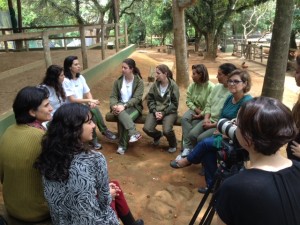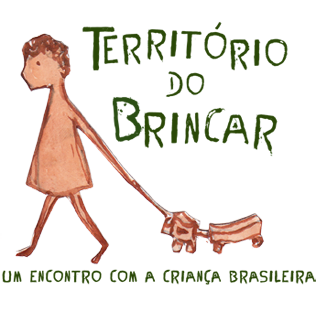The Territory of Play has counted on a partnership with six schools that contributed to this  initiative during 2012 and 2013. The Territory of Play team organized materials with videos, photos and texts at each community, inviting educators to reflect and converse with the various childhoods of our country. These debates encouraged a sensitive view of childhood and education. Through these exercises of watching and listening to the child that plays building cars and boats, that plays with water, earth, air and fire, that plays as boi or careta, the educator turns their eye towards the child that also plays in our schools. This diversity brought up questions, dialogs, and possibilities throughout these two years, turning the partnership between The Territory of Play and schools into a space for listening and sensitivity towards children.
initiative during 2012 and 2013. The Territory of Play team organized materials with videos, photos and texts at each community, inviting educators to reflect and converse with the various childhoods of our country. These debates encouraged a sensitive view of childhood and education. Through these exercises of watching and listening to the child that plays building cars and boats, that plays with water, earth, air and fire, that plays as boi or careta, the educator turns their eye towards the child that also plays in our schools. This diversity brought up questions, dialogs, and possibilities throughout these two years, turning the partnership between The Territory of Play and schools into a space for listening and sensitivity towards children.
 |
“It was just like that: let them play with more freedom, pay attention to their play, see what they are doing, what they say while they’re playing… We get to know them while they’re playing; seeing how they hold a doll, listening to what they say as they play.” |
 |
“In many ways this partnership has shown us the child at play, encouraging, substantiating, and allowing the child to play inside the school. More free play with nature, with less structured materials, with more time for play!” |
 |
“The whole diversity of childhoods brought by The Territory of Play changed our view of play. It makes us see things we don’t notice directly, such as seeing everything that is behind the gesture of a child.” |
 |
“I believe it has further refined our view of respecting the children’s time; our view and sensibility when it comes to dealing with them.” |
 |
“The films are extremely poetic, the expressions of the children are extremely genuine! The Territory of Play fostered our sensitive vision and encouraged us to listen to the children.” |
 |
“Suddenly our children started bringing PVC tubes and similar materials in order to build toys at school. This came from The Territory of Play, which has shown us children making their own toys, cars made of cans and other materials that have the potential for building.” |





